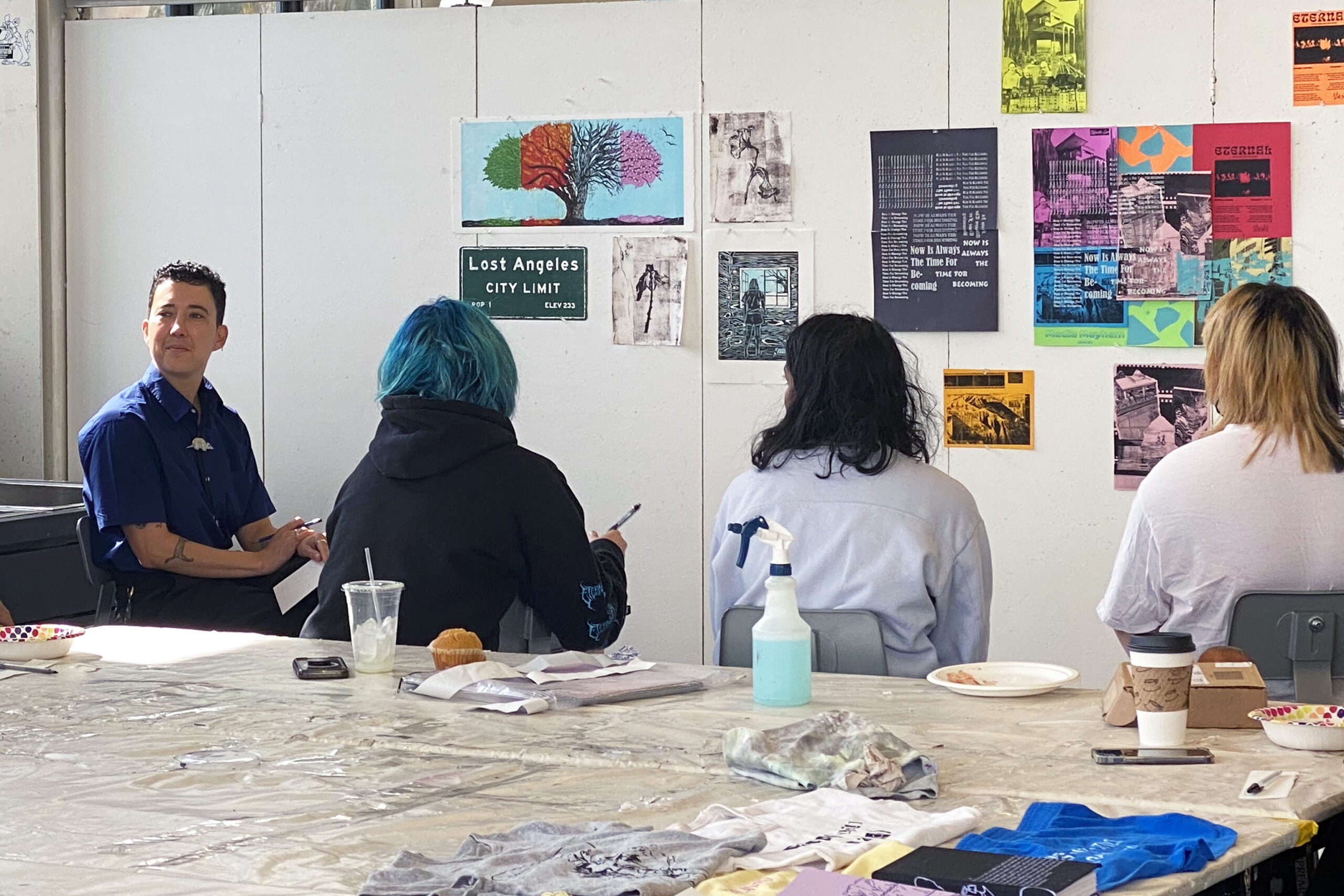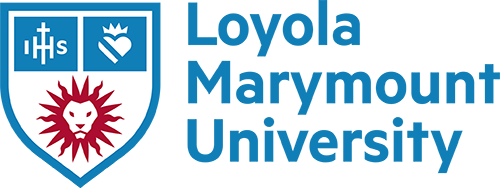
When it comes to printmaking, as with many art forms, there is so much more than meets the eye. With roots in social and political movements, printmaking has historically been used to produce graphic images and text that amplify voices of underrepresented groups, as well as serving as an avenue to bridging differences. Paloma Barhaugh-Bordas, assistant professor of studio arts and new printmaking area lead, came to LMU ready to build upon this historical framework, using these aspects as pedagogical tools for building a decolonized, anti-racist, and equitable community in the classroom and beyond.
Before their arrival at LMU, Barhaugh-Bordas had a well-earned a national reputation as an artist, activist and educator dedicated to building community through creative and scholarly practice. They approach teaching as a liberatory practice, stemming from a firmly held belief printmaking is an avenue for empowerment which can ultimately take shape in a wide variety of practices, both art-related, and not.
“My goal is to create a space and an experience where students believe their ideas are important and feel empowered to pursue what matters to them,” Barhaugh-Bordas says. “That process is one that involves experimenting with different things, even if you fail. And what I love about print and our program here is we have so much variety to offer students that they can fail in one thing, and still learn enough to succeed at another.”
“Printmaking skills — creativity, attention to detail, problem-solving, the ability to work well with others — can be used in so many different ways after students graduate.”
Although they didn’t recognize it as such at the time, Barhaugh-Bordas connected to printmaking early on as a child growing up in Denver, raised by parents who were active working with diverse populations in the community. Barhaugh-Bordas’ father started YouthBiz, a nonprofit that taught entrepreneurial skills to inner-city youth, who were able to make money printing and selling t-shirts. And while Barhaugh-Bordas didn’t interpret printmaking as an art form in that context, they did recognize it as an avenue of empowerment and a team-building tool.
In college, Barhaugh-Bordas felt drawn to follow their parents’ example of merging art and community, and when they took their first printmaking class, they knew they had found their calling. “I realized printmaking is a medium that welcomes anyone who wants to communicate visually, without limits,” Barhaugh-Bordas says. “But it also has roots in spreading information — especially on behalf of those who are less visible in formal communication modes. I began to use it to express my identity and my relationship with social phenomena.”
It was also as an undergraduate and graduate student in predominantly white institutions that Barhaugh-Bordas began to define their identity as a queer person of mixed-race heritages. “In these spaces, my attunement to subtle shifts in cultural norms became a survival skill which developed into a platform for advocacy and inclusion as a faculty member,” they say. “I am invested in being visible as a queer, non-binary, person of color in academia, as an advocate both for the students I teach and for equity and representation in the field of printmaking.”
Printmaking’s history is one of democratizing knowledge through words and images, Barhaugh-Bordas notes. It is also highly collaborative. “It’s distinct from painting and sculpture in that way,” Barhaugh-Bordas says. “We share machinery and resources, and that’s how you get this cross-pollination of ideas. I can teach two groups of students different things, and they will learn from each other.”
It’s also a chameleon-like art form that has always been innovative and adaptable. “When I was in college, everyone worried about digital printers and how they would replace traditional printmaking,” Barhaugh-Bordas says. “Then people got excited about 3D printers. But printmaking is a curious medium that is always trying to understand how to make things faster, cheaper, better. When technology changes, it’s on board and ready to try new things.”
While new printmaking technologies emerge, old ones that seem to have fallen out of favor will often make a comeback. One example, Barhaugh-Bordas notes, is lithography, which has found new life as an eco-friendly medium. Barhaugh-Bordas recently spearheaded a successful effort to obtain a lithography press that will open up many more printmaking opportunities for LMU students. “You use a limestone and just grind away the tiniest bit off the top, then draw on it again,” says Barhaugh-Bordas, one of several nationally-known lithographers within CFA’s faculty. “You’re not throwing things away and creating waste, and there’s little plastic being used, which is better for the planet.”
Barhaugh-Bordas is thrilled to be at LMU, where they intend to take advantage of the diverse interests and talents on the campus, bringing together print and other art forms in mutually beneficial ways. “Printmaking skills — creativity, attention to detail, problem-solving, the ability to work well with others — can be used in so many different ways after students graduate,” Barhaugh-Bordas says. “I’m excited to welcome students with all types of interests and backgrounds, and to help them explore their curiosity in innovative ways.”






